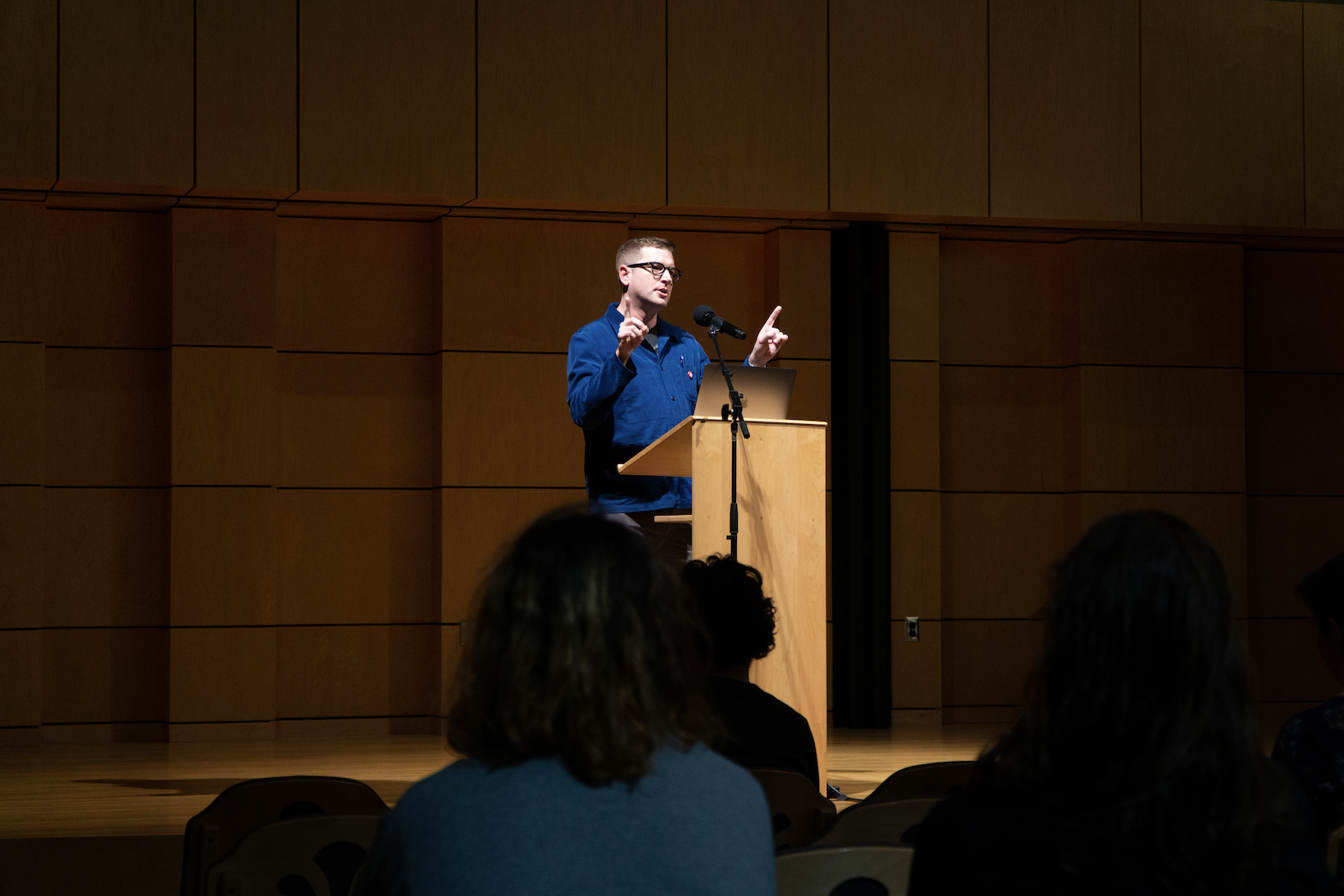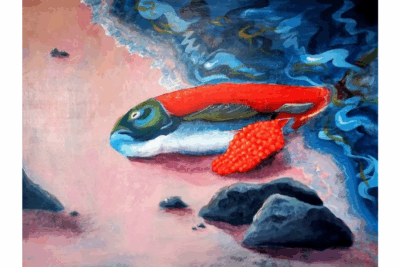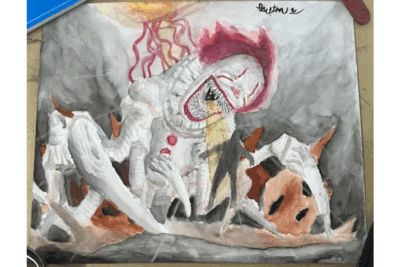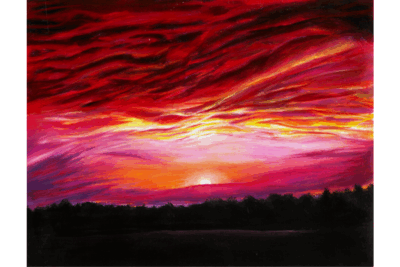Illustrator John Hendrix spoke in Rieth Recital Hall on Sunday. Hendrix is the latest guest in the Eric Yake Kenagy Visiting Artist Program. The program, a memorial for a Goshen College graduate who died in a cycling accident, invites a visual artist to campus each year to give a lecture and interact with GC art students.
Hendrix has quite the list of achievements — his work has been featured in a variety of big-name publications, including The New York Times, Sports Illustrated and Time magazine. Hendrix has also published five books, and he currently serves as the chair of the Master of Fine Arts in illustration and visual culture at Washington University in St. Louis.Hendrix’s career began modestly. He sold his first comic books to high school friends for four dollars, half of which he said was just the cost to print the covers.
Interested in comics and visual storytelling from a young age, Hendrix is a self-proclaimed visual learner; everything starts with images for him, and that characteristic is the basis of his communication style.
He said, “illustration to me is what happens in your mind when text and image enter at the same time.” His work skillfully incorporates both to produce this phenomenon.
Hendrix has done a large variety of projects throughout his career. He has drawn illustrations for book covers and interiors, advertisements, magazines, newspapers, children’s books and graphic novels. His personal projects revolve mostly around faith.
Much of his talk on Sunday revolved around “The Faithful Spy,” a book he wrote and illustrated about Deitrich Bonhoeffer, a Theologian involved with assassination plots for Hitler during WWII. He termed the work “designistration” —“it’s 100% text and 100% illustration, it’s both, it’s not one or the other” — and it tells an important historically-accurate story in an engaging and accessible way. Much of his work targets young audiences, though he mentioned that, done well, content created for young people can interest other demographics as well.
His drawings are brilliant combinations of text and illustration. One of his specialties is hand-drawn text that both merges with and accentuates the illustrations it accompanies. During his presentations, he shared many Bible verses and biblical stories he has illustrated, connecting scripture to animated illustrations.
Another characteristic of Hendrix’s work is his use of visual metaphors. To tell the history of the Holocaust to a young audience he depicted scenes such as rats sneaking into the Reichstag (German Parliament) building, and drew Hitler as a personified wolf.
Currently, Hendrix is working on a book about the friendship between influential authors C.S. Lewis and J. R. R. Tolkien. He symbolizes the two with a lion and a wizard, respectively. He is 65 pages into a book that will eventually be 200 pages — “so you’ll see that in stores in twenty-five years,” he said.
The talk was followed by a lively question-and-answer session and a reception in Hershberger Art Gallery.




